Altars & Artists: Emily Bridget Taylor
Interview 03 - gothic poetry, Victorian houses, and writing as remedy
Welcome to Altars & Artists, a monthly interview series divining the poetry of artists' spaces. Inspired by Gaston Bachelard’s book "The Poetics of Space" and Virginia Woolf’s extended essay "A Room of One’s Own", Altars & Artists delves into the creative spaces of contemporary artists to reveal the intimate worlds they operate within.
If you enjoy this series, please consider becoming a paid subscriber—doing so unlocks an extended cut of each interview, including a prompt made especially for you by the guest. Your contribution also keeps Ruminations running & this writer at her desk ❧
New to this series? Be sure to check out the intro post below:
Please welcome our next guest to Altars & Artists - Emily Bridget Taylor ❧
Emily Bridget Taylor (she/her) is a Perth-based poet and spoken word performer. Her artistic calling is to pen words that heal, inspire, and shed light on women’s stories, especially those that have been silenced. Since 2021 she's built an audience across Instagram, TikTok, and Threads, with her poetry receiving more than 300k views on TikTok alone. In 2022, she won a position in the Four Centres Emerging Writers Program, working with KSP Writing Centre and Fremantle Press to develop her poetry manuscript. In 2022, she published 20 poems from this emerging manuscript in the form of an illustrated zine, which sold out in bookstores across Perth and internationally. The same year, Emily developed her poetry into a spoken word show and performed at Wild Village Festival, where she is slated to appear again in 2024. Remedy, her debut collection of poetry, was published by Bijou Press in June of 2024 and is out now everywhere.
Emily was the first local poet I had the pleasure of befriending and has proven herself to be one of the most passionate and determined people I know. I’m so excited to welcome her to Altars & Artists and share this interview with you <3
Questions & Curiosities
Welcome to Ruminations, Emily! Thank you for joining us today. Could you please begin by sharing a little bit about yourself and your art?
EBT: Hello! It is such a pleasure to be a part of this amazing series. I have loved reading your previous interviews and feel so lucky to be featured! I’m an Australian zine-maker, poet and spoken word artist with a love for the gothic, romance and anything and everything Victorian. I am fascinated by where devotion takes us—and the capacity for delusion we all carry, especially when in love. According to yesterday’s Chat GPT roast, “If brooding was a sport, you’d be a gold medalist”, which I think sums it up perfectly. This year my debut poetry collection Remedy was released!
What an incredible achievement Emily, congratulations! Attending your book launch and watching you perform Remedy’s poems was a special experience. In the lead-up to Remedy’s release, you described the collection as your “Jane Eyre meets The Tortured Poets Department book of longing”. What was your process for constructing that dark, yet romantic world?
EBT: Thank you so much for being there! Remedy is a body of work that has occupied my mind since the pandemic. The gothic, double vision, ghosts, and lost love have compelled me for years, and these lines would reverberate in my head until I typed them into my iPhone notes late at night. Somehow this overflowed into a manuscript on my laptop. Then the real work began, editing it into a collection—a diaristic story of love gone wrong.
Told across four confessional chapters, Remedy is a perilous romance unfolding. Part 1, ‘The Falling’, is a foray into the wildness of young love. Across Parts 2 and 3, ‘The Severing’ and ‘The Healing’, the summer of this great love surrenders to the darkness and bewilderment of the deepest winter—what happens when the person you love becomes unrecognisable? What happens when the hero shapeshifts into the villain? The final chapter, ‘The Resurrecting’, is about reclaiming strength after loss and falling back into the arms that always held you—the divine, your kin, and the earth itself. Remedy is for those who refuse to be extinguished—and those who love the idea of a poetry book that tells a story!
Writing this collection is quite the story, too—as Remedy came to life on your laptop, you were moving through a number of different locations. Can you tell us where the journey of writing Remedy took you?
EBT: The project began in South Perth where I lived in a cottage built in 1919. It was such a darling place—a rental I found with my partner at the time. It had a Wes Anderson-pink kitchen, turquoise bedrooms and a mustard-yellow lounge room. We shared that house with two cats, and I created a beautiful writing room with fairy lights, old Art Deco mirrors and a curbside armchair I’d sit in to make poetry edits. I think that was my favourite writing room of all time—I wrote a novel in that room and the main parts of Remedy. I tried on outfits and danced when I needed inspiration or a shift in energy. The pandemic took place while I had that writing room, and it became a sanctuary for recording my days while the world fell silent.
A few years later, I moved to Boston and lived in a three-storey Victorian townhouse. It was an Airbnb that became a long-term rental, and I shared it with anywhere between 6-12 housemates at a time, who would drop in from all over the world. It was a chaotic, claustrophobic time and I wasn’t able to write a tonne in there. I’d escape down the street to write at a local diner that served pancake stacks for a few dollars and black coffee from a jug. On sleepy days, I would write in bed, listening to travellers lug suitcases up the stairs and a kitten called Little Tree run past them, bell jingling.
At the time of writing, I am preparing to move again. I finally managed to buy a house and plan to make the second upstairs bedroom the writing room of my dreams. I’m thinking William Morris wallpaper, lots of moody hunter green and a million candles! I can’t wait to share the process with my Love Notes community and on Instagram. I hope it will be the place I write the most books I ever have.
In her article foregrounding the ways women strive to negotiate spaces of their own, Maria Tamboukou reflects that “The interaction of the microcosm of the 'room' and the macrocosm of travelling seems to have opened paths for self-exploration/revelation”1. I wondered if this resonated with you and if your physical journey across the world felt, at times, like an internal or spiritual journey too.
EBT: Creating in Boston was special because the East Coast is where many of the writers I most revere lived, wrote and established their legacy. Sylvia Plath was born in Boston, so creating in that city felt mythic—like I was in her presence as I wrote, listened to people talk through townhouse walls and communed with my own ghosts. Only a few hours away was Emily Dickinson’s house. Being near where she once roamed felt like I was in the vicinity of creative family. There is a spiritual energy that connects writers across space and time, and both she and Sylvia feel like precious guides. In that way, my physical journey intersected with a spiritual one, as I wrote on landscapes my treasured literary icons once did.
Now that you’ve settled back in Western Australia, I’d love for you to walk us through your current creative space!
EBT: I will not be in my current writing room much longer, but it has held space for me while I’ve needed it, and I’m fond of it. Here I wrapped and packaged the first orders of Remedy, which was really special. On my desk is a stone lion I got from the New York Public Library, an amber jar of my favourite pens, a glass tray of gemstones and a green librarian lamp. In the cart on the right, my books and publishing house stationery wait for the next order. Behind me is a white shelving unit containing all the journals I’ve ever used—I think I have around 50 filled and half-filled. When I am tired, I write on the floor rather than the desk. I’ve been doing that a lot lately—being low to the ground helps me feel calm when my ideas feel big. I come down to breathe.
“When I am tired, I write on the floor rather than the desk. I’ve been doing that a lot lately—being low to the ground helps me feel calm when my ideas feel big. I come down to breathe.”
Your poetry has an honest, confessional quality akin to the style of Sylvia Plath. Who did you turn to for guidance in the process of writing Remedy? And, with that project now at a close, are there any new influential figures you’ve been turning to for inspiration?
EBT: Thank you for making my day! My muses are the dead Romantic poets like John Keats and yes, absolutely, confessional poets such as Sylvia Plath. I named one of my poems Ariel in honour of her collection. “Ariel” means lion of God, and when I learned that, I was inspired to write about what resurrection looks like—this became a central theme of Remedy. While writing Remedy, I deliberately avoided modern poetry. I wanted to cultivate an old-world tone in Remedy, which called for a mournful and other-worldly voice, so I needed to fully immerse myself in that. Now that Remedy is finished, I am reading a variety of mainly modern writers. I am hungry for new voices and curious about what people are doing now. I just finished Jennette McCurdy’s memoir, which was phenomenal and inspired me to write bigger and braver than ever before.
Within the last year, you founded Bijou Press, an independent publishing press for female storytellers. What is your vision for the press and what drove you to carve out this new space for female writers within the existing publishing industry?
EBT: Bijou Press was born from a desire to see women's voices take up space and their stories heard. I watched women in my life from an early age have their voices silenced, erased or forgotten—and this has lit a fire in me to amplify them even more. Women's stories are crucial, important and healing to our society. Making space for them is what I feel I was born to do. Outside of Bijou Press, coaching (where I help female authors write and get “unstuck”, one-on-one via Zoom), and creating an anthology of poetry is something I hope to do in the future.
Thank you for sharing your altars and creative journey with us Emily! Before we move on to the next segment for our paid subscribers, is there anything you can share with the readers of Ruminations about your current creative projects?
EBT: My focus at the moment is performing spoken word poetry at local gigs and festivals. My next festival appearance is at Wild Village Festival in November, so if you’re into music, wellness and art and live in WA—I’d love to see you there! Grab a ticket here. I am also writing monthly essays for my email subscribers. Subscription to ‘Love Notes’ is free and you will enjoy seasonal reflections, poetry and updates on what I’m writing next!
You can stay in touch with Emily below:
Join Love Notes, Emily’s monthly email dispatch: Love Notes
Instagram: @emilybridgettaylor
TikTok: @emilybridgettaylor
Before you leave us with your creative prompt, we have some rapid-fire questions for you…
…you can read the Extended Cut HERE.
Thank you for tuning in!
If you enjoyed diving into Emily’s creative spaces today, please consider sharing/restacking this interview. Doing so helps the series reach new readers and ensures I can feature exciting new artists monthly. I love bringing you these interviews so much and can’t wait to chat in the comments <3
Yours in rumination,
Caitlin ❧
Last month on Altars & Artists…
Tamboukou, M. (1999). Spacing herself: Women in education. Gender and Education, 11(2), 125-139. doi:https://doi.org/10.1080/09540259920654






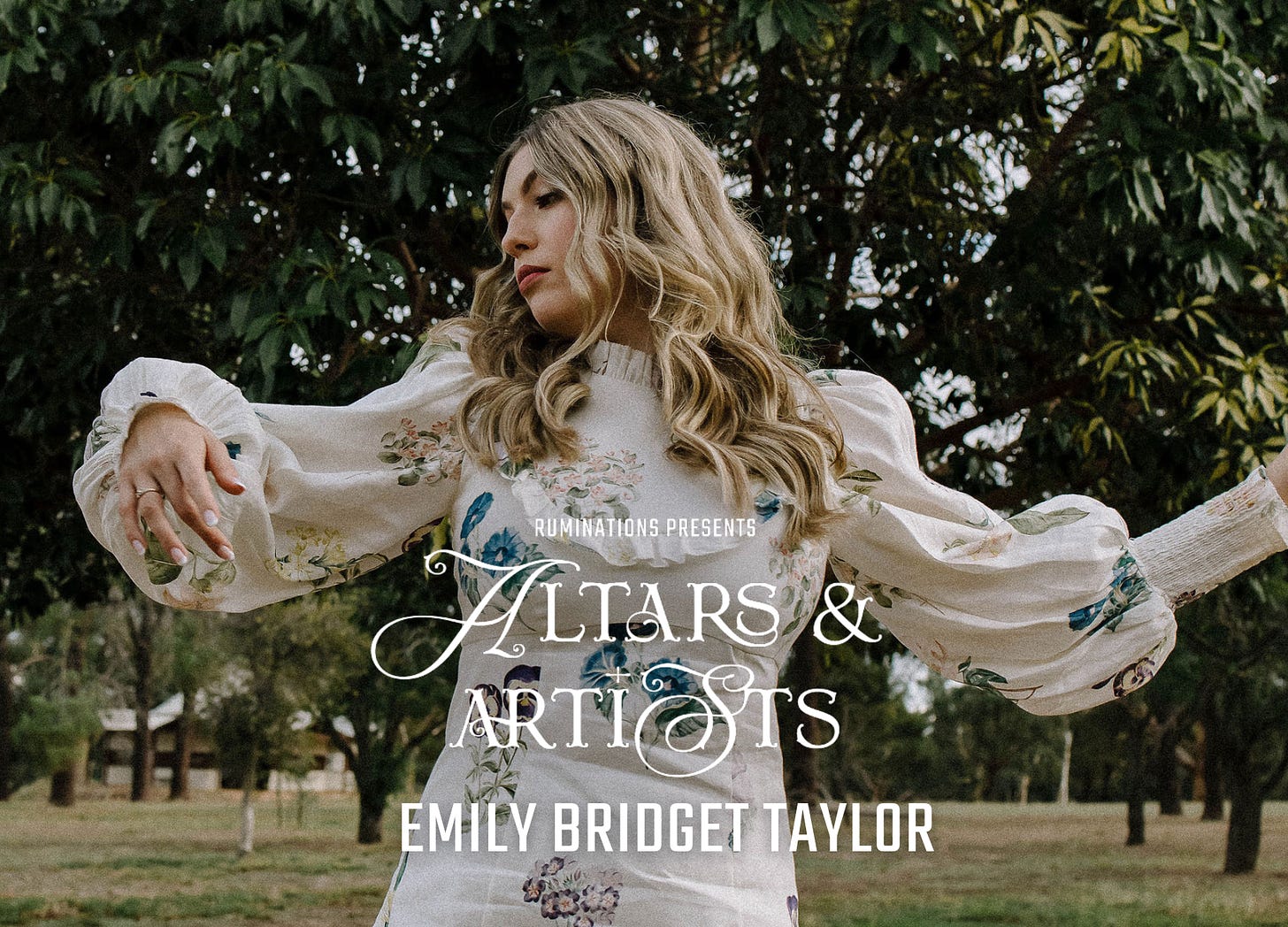
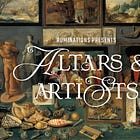

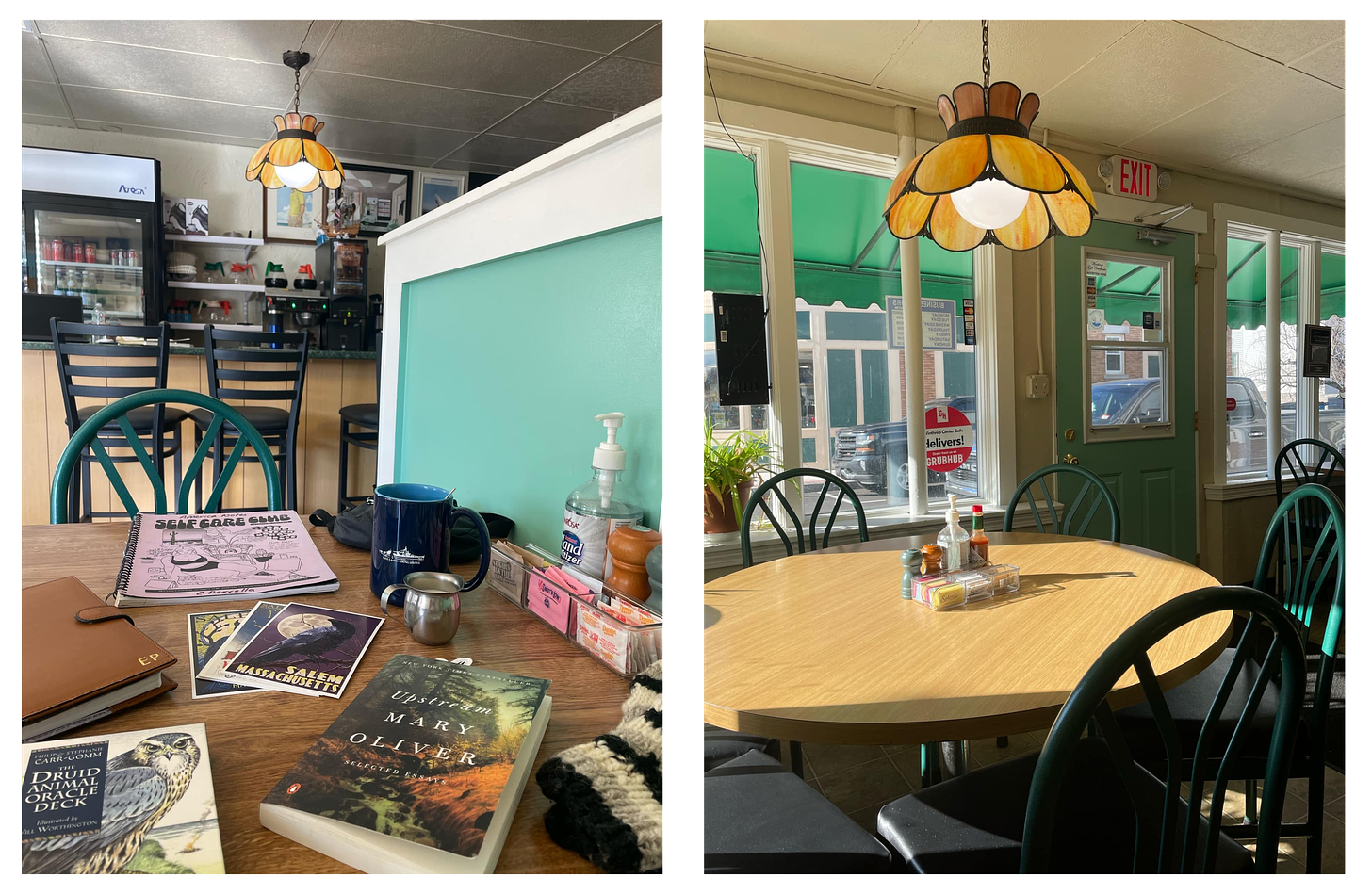
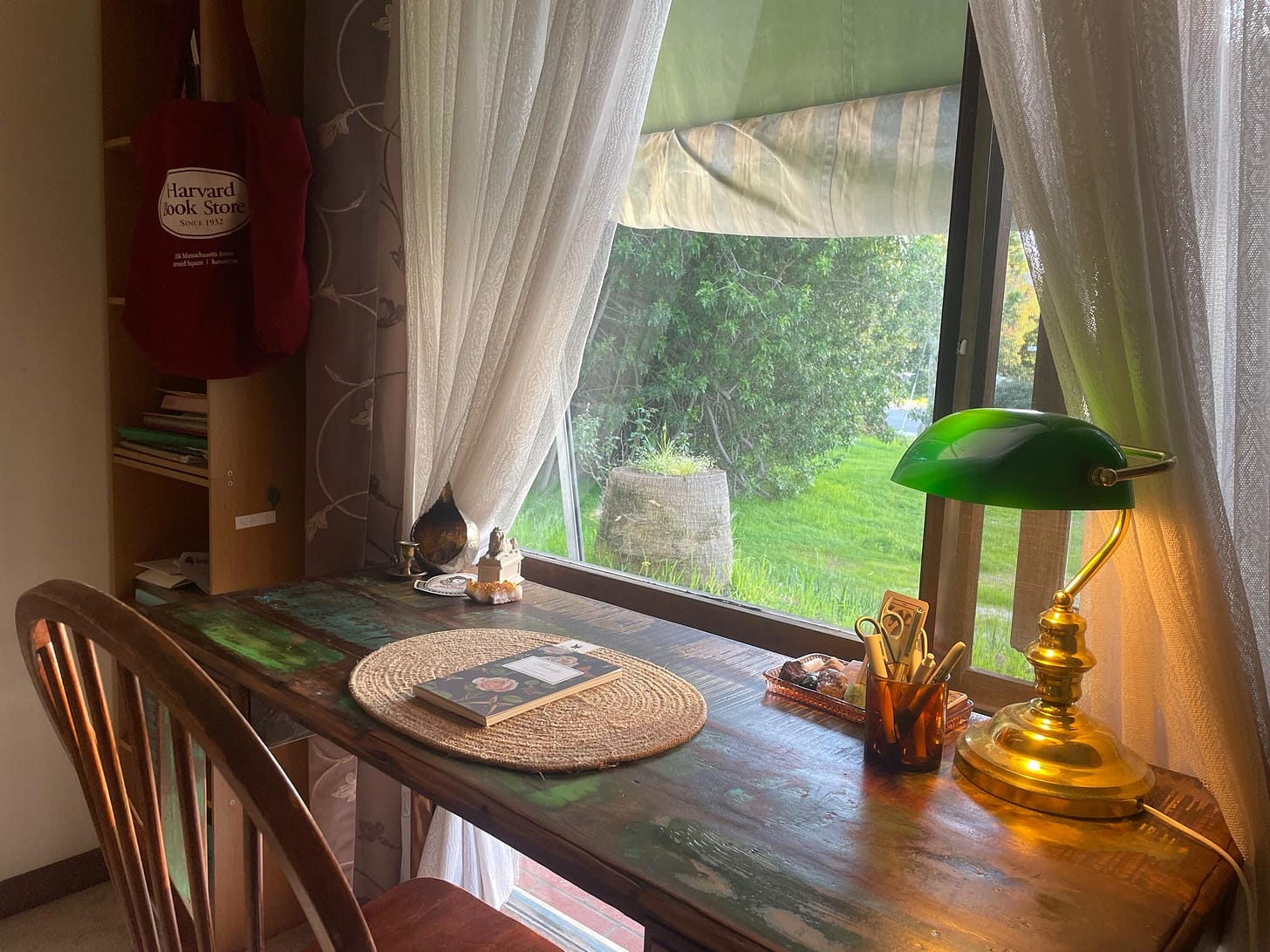
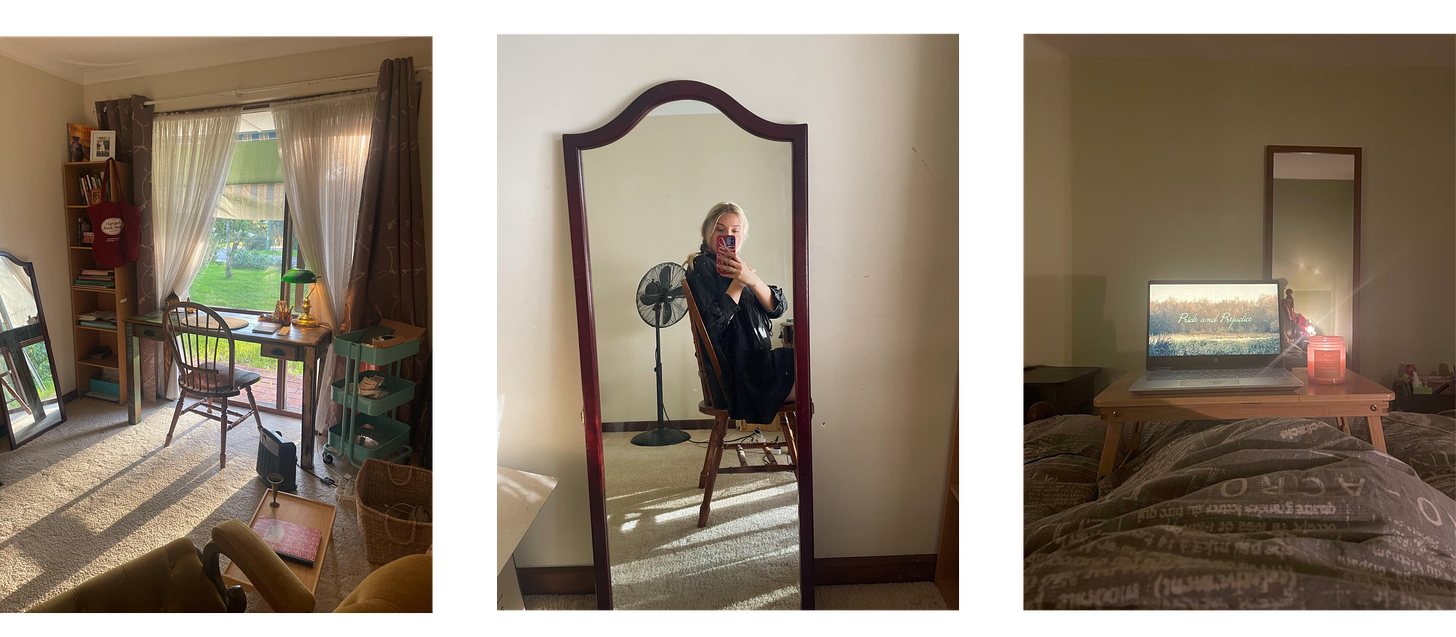

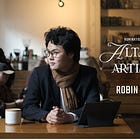
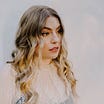
Wow, I see how every writer is a little like all of us and yet so very unique. thank you for this and all the others to come. i truly am looking forward to more. I wish I am that good someday, even close too.
I should have known Emily would be just perfect for this series! Great interview! 👏